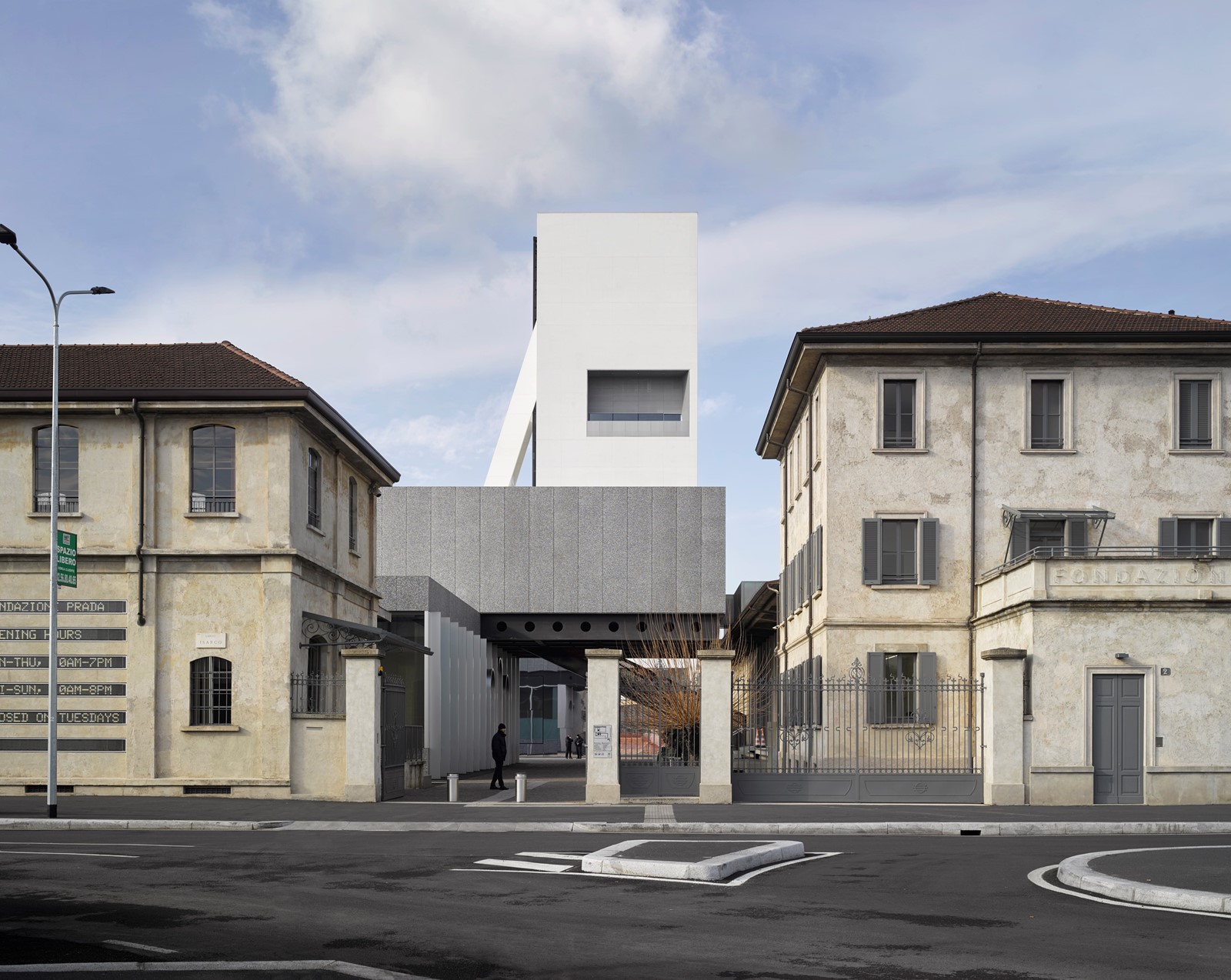The 60-metre tall Torre has been looming over the gilt and concrete grounds of Fondazione Prada since 2015. Five of its nine floors have been looking out over the city of Milan since its unveiling in May of that year and yet ever since, the public have been unable to do the same – that was, until Prada’s A/W18 show in February of this year, for which the audience filled the fourth and fifth floors, perched on stalls overlooking an overgrown railway line speckled with neon signage in ubiquitous Prada shapes. This month, however, sees the opening of the Torre for its originally intended purpose: to house and showcase key pieces from the foundation’s permanent art collection.
Designed by Rem Koolhaas alongside his OMA partner in charge Chris van Duijn and project leader Federico Pompignoli, the blindingly modern white tower stands over the grounds – a transformed distillery from the 1910s – in the south-eastern reaches of Italy’s industrial capital. An external tube slants down from the building’s south side and drives into Deposito, the adjacent building, like a spear – one fails to see where one ends and the other begins. A glass elevator clad with what looks like pink crystal slides up between the two intersecting buildings and out into the open sky. This short but sensational journey offers a neat encapsulation of the entire Fondazione’s architectural approach: a host of interacting buildings, each distinct and fluid at the same time. The site’s ten structures, some old, some new, are thus engaged in a kind of spatial dialogue: take the gold karat-gilt Haunted House, which seemingly slots into the adjacent Podium, part hidden, part exposed.
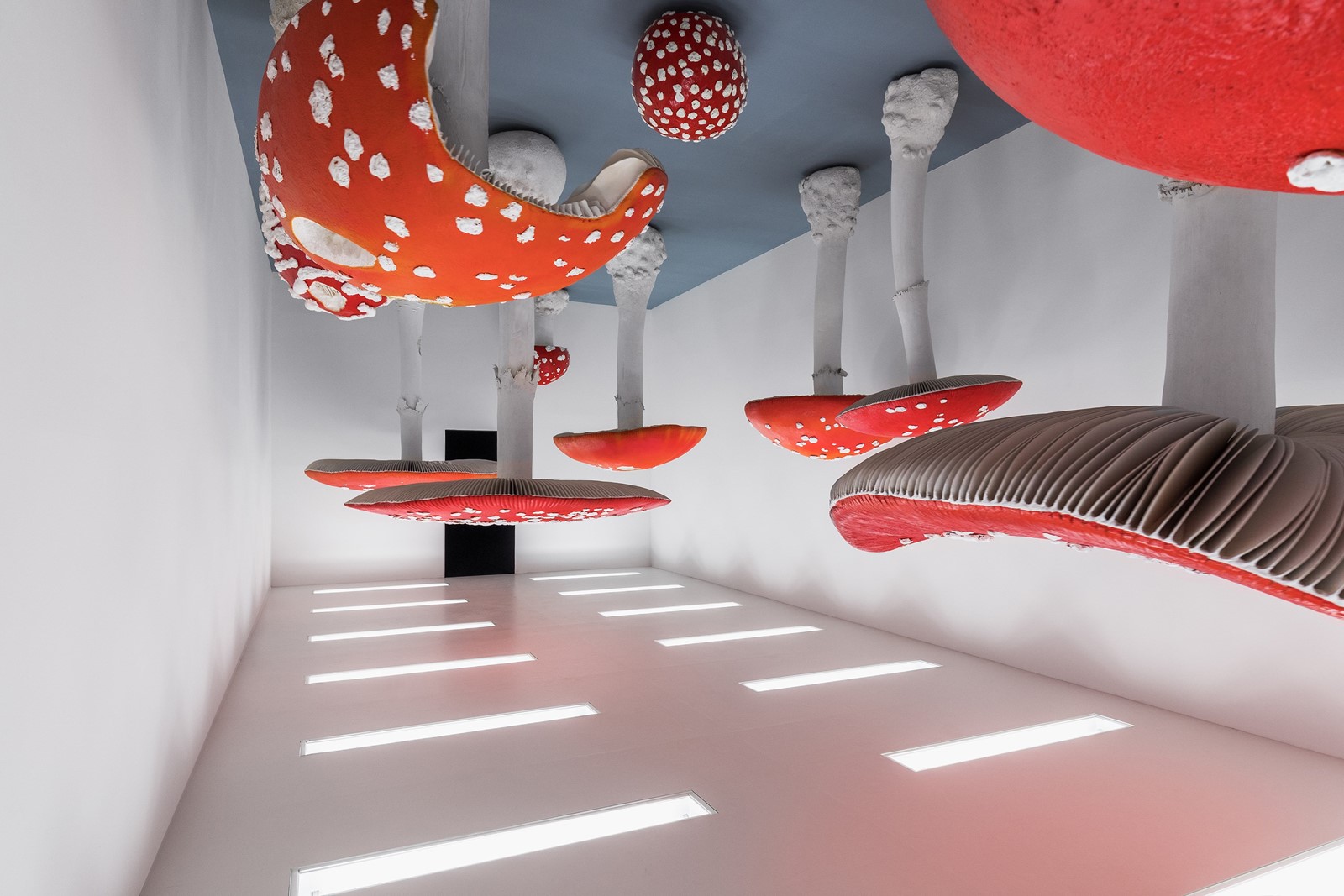
Fittingly (this is an inch-perfect production of Prada’s, after all), the curation of the Torre follows suit. Numerous works from the Collezione Prada – many of which have been shown by the foundation on various occasions before – find a new home in a dialogue of their own in Atlas. Curated by Miuccia Prada and Germano Celant, the permanent exhibition’s title refers to the merging and mapping of the house’s numerous and potentially disparate acquisitions. “The selection corresponds to a precise idea of stratification through time,” Celant tells AnOther. “The different floors stand for the sedimentations of exhibitions and artists that have led to the creation of Fondazione Prada’s ‘world’. Inside the Torre, we can see the progression of its history – starting from the Milan-based shows of Walter De Maria, Edward Kienholz, Carsten Höller, Michael Heizer and John Baldessari, through stratifications from Miuccia Prada and [husband to Miuccia Prada and the brand’s CEO] Patrizio Bertelli’s collection, to the acquisition of works by international artists such as Jeff Koons, William Copley, Damien Hirst and Mona Hatoum. It’s like reading a vertical section of the earth’s crust, in which all the activities of the Fondazione and the people who were involved with its mission of celebrating the importance of art can be found.”
“The different floors stand for the sedimentations of exhibitions and artists that have led to the creation of Fondazione Prada’s ‘world’... it’s like reading a vertical section of the world’s crust” – Germano Celant
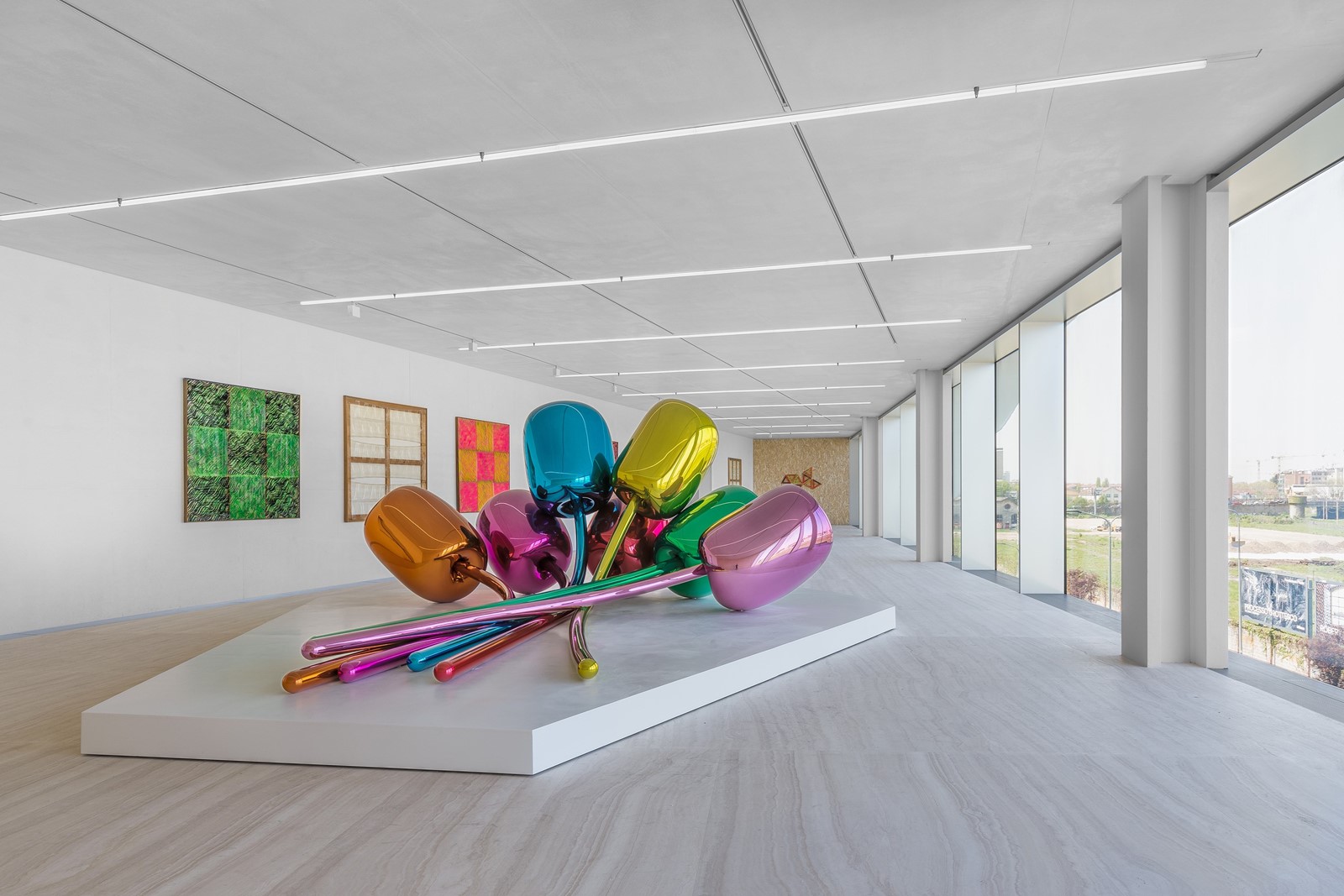
What emerges is a series of “duets” on each floor – Hirst with Copley; Koons with Carla Accardi; Edward Keinholz and Nancy Reddin Keinholz with Mona Hatoum – that play out between the floors. Said floors grow in ceiling height as you ascend the building – with the tallest space on the top floor occupied by large experiential installations by both Baldessari and Höller (the former’s perplexing participatory video work The Blue Line sits alongside Höller’s mind-bending Gantenbein Corridor punctuated by his Upside Down Mushroom Room). On each floor, the space dedicated to each artist feels roomy and generous, a sense doubly enforced by the lavish space and bountiful vistas – something Mrs Prada and Celant worked closely on with Koolhaas. “The exchange of ideas with Miuccia Prada has led to the decision of not presenting a ‘fragmented’ exhibition, i.e. one or two works for each artist, but to create a powerful visual impact through the great and important works of a handful of artists who can really provide a clear and precise identity to the intellectual and aesthetic choices that have shaped the collection and the foundation, and the passion behind them.”
The pairs interact on different planes. Some are entwined historically, like Heizer’s paintings with Pino Pascali’s sculptures – they share “the 60s and a certain progressive attitude toward art: Europe on one side and America on the other, realism and abstractionism, the natural and the industrial,” as Celant explains. Some politically, like the installations of both Kienholz and Hatoum, the former reflecting on the social situation in Germany during the Second World War, while the latter explores the war between Israel and Palestine. Others offered dissonance, like the sensationally coloured and sexually explicit paintings of Copley that clad the walls surrounding three of Hirst’s sterile and cerebral vitrine works (Waiting for Inspiration [Red and Blue]; Tears for Everybody’s Looking at You and A Way of Seeing).
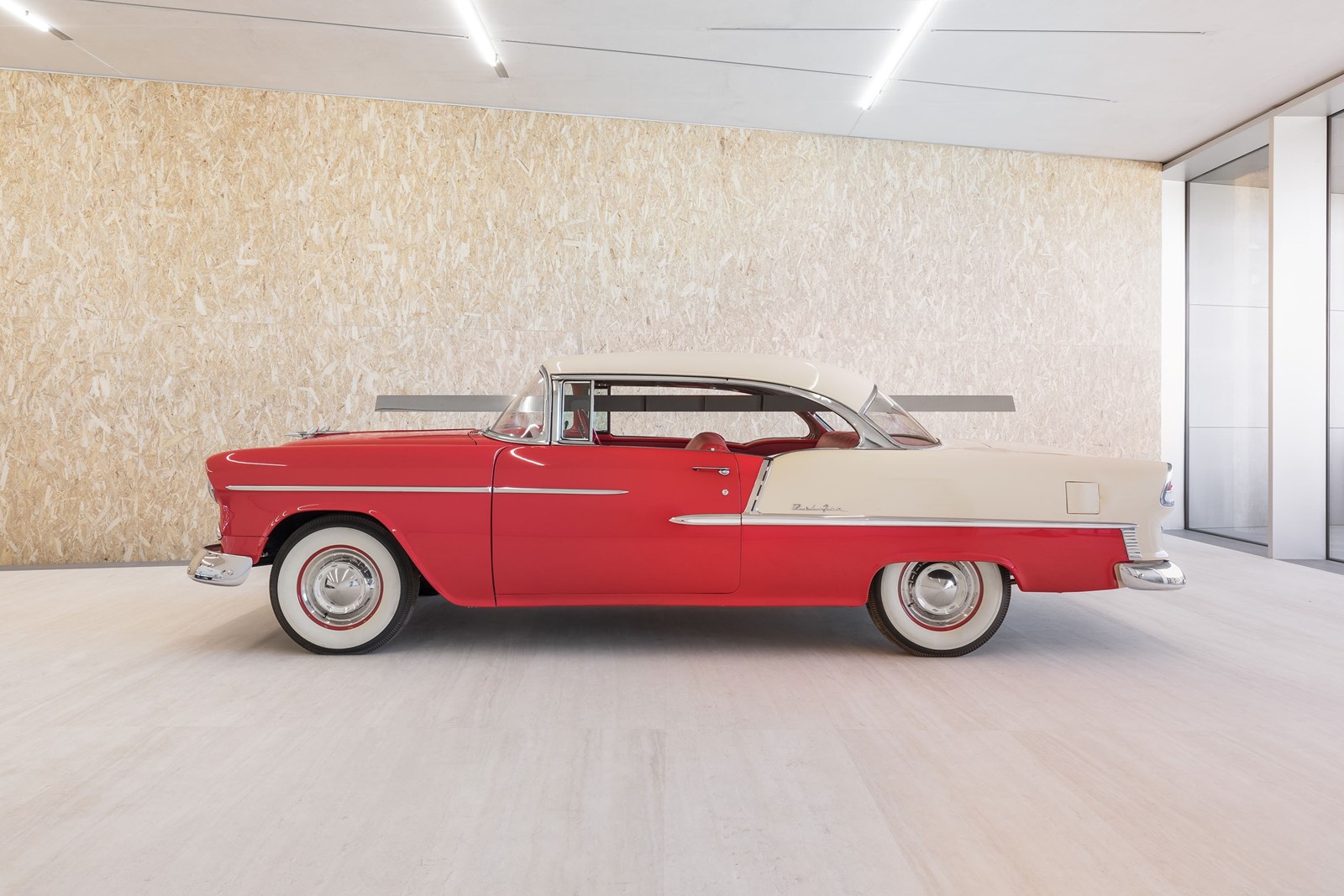
The restaurant on the sixth floor takes the dialogue all the way to dinner, in a room hosting Philip Johnson’s original furnishings from the Four Seasons Restaurant, New York, that were auctioned off in 2016. (The dismantling of Mies van der Rohe’s Seagram Building on Park Avenue was referred to by many critics as a destruction of “one of the rarest phenomena in Modernism”.) Ceramics by Lucio Fontana, paintings by Copley and Jeff Koons’ play on 80s booze ads fill the walls and in traditional Italian trattoria style one wall brims with plates created especially for the restaurant by artists such as Thomas Demand, Baldessari, Elmgreen & Dragset and Goshka Macuga. Here, new and seen works, tradition and history, conflate in raucous, comradely chatter.
“New, old, horizontal, vertical, wide, narrow, white, black, open, enclosed – all these contrasts establish the range of oppositions that define the new Fondazione” – Rem Koolhaas
Rem Koolhaas describes Fondazione Prada as unusally diverse in its spatial environments. The combination of reconfigured distillery buildings and new structures means that the Fondazione is neither a preservation project, nor a new piece of architecture. Two conditions that, he writes, “are usually kept separate here confront each other in a state of permanent interaction – offering an ensemble of fragments that will not congeal into a single image or allow any part to dominate the others. New, old, horizontal, vertical, wide, narrow, white, black, open, enclosed – all these contrasts establish the range of oppositions that define the new Fondazione. By introducing so many spatial variables, the complexity of the architecture will promote an unstable, open programming, where art and architecture will benefit from each other’s challenges.” As such, artists and architecture alike converse, openly, broadly and luxuriantly – in a space in which it is a delight to listen.
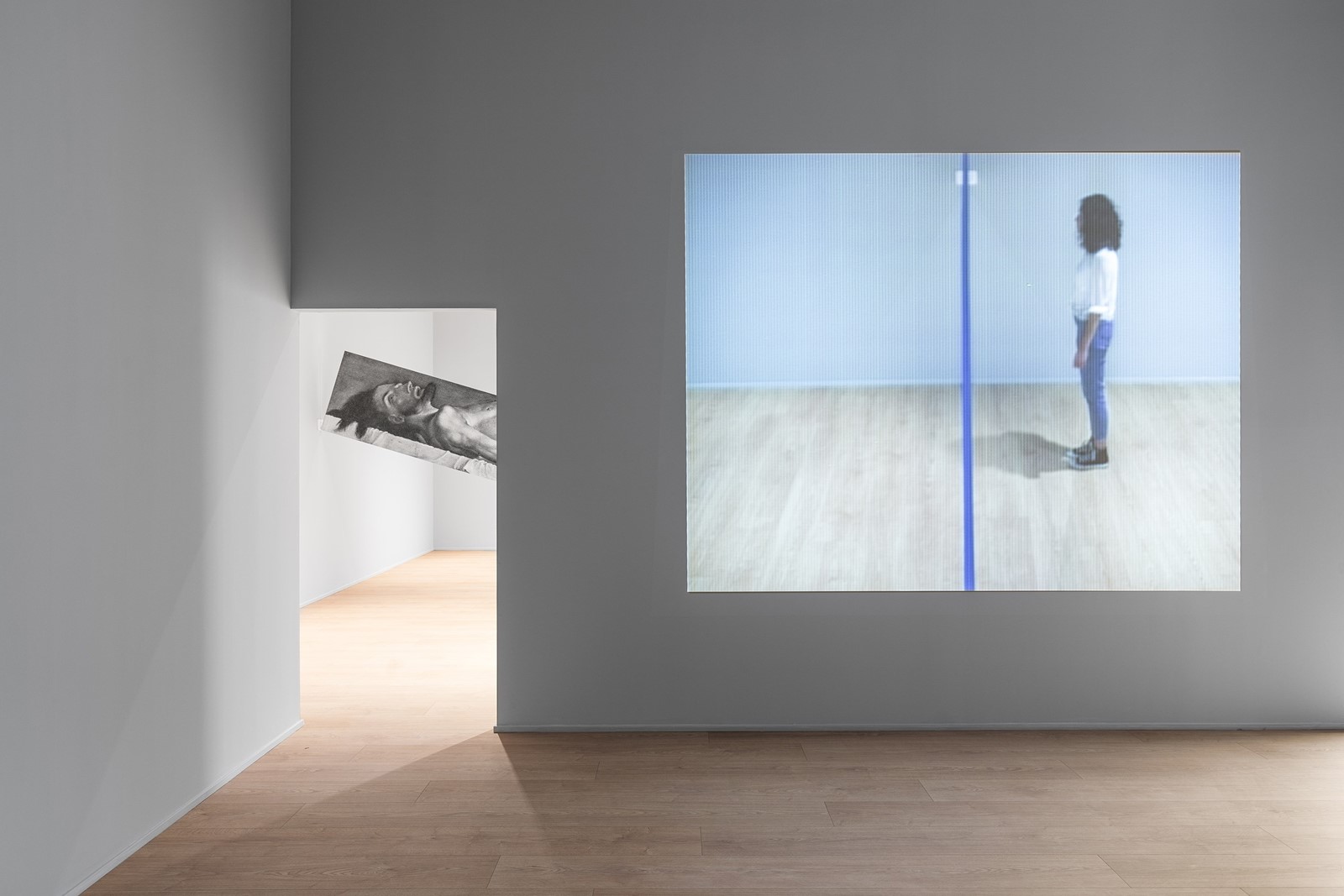
The Torre at Fondazione Prada, is open to the public now.
